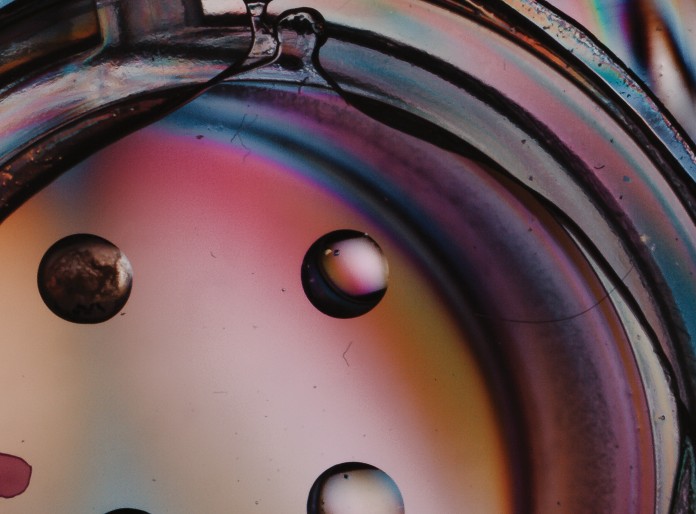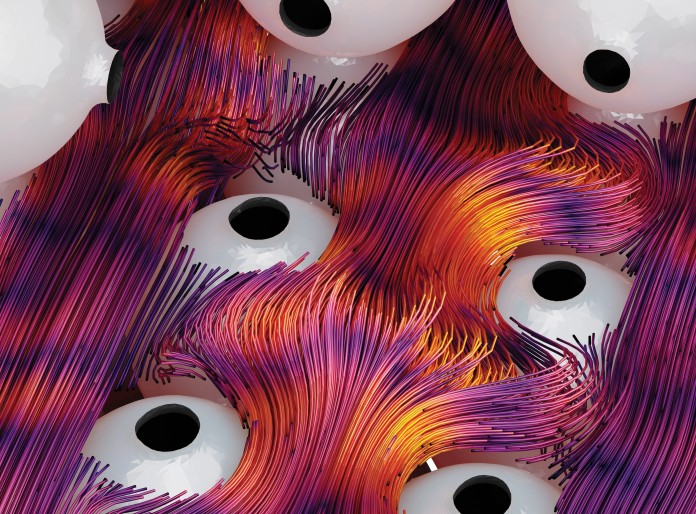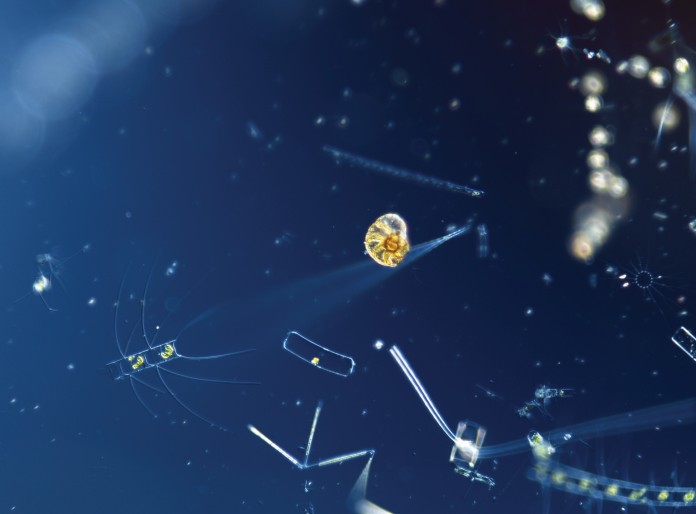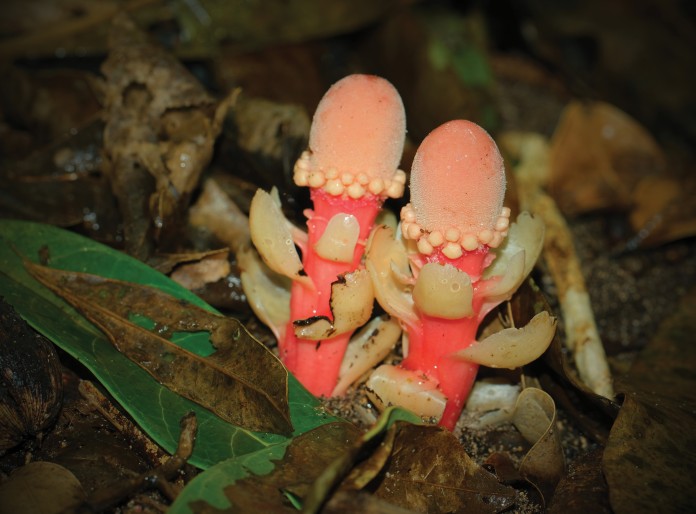This sCMOS camera image shows the blood vessel pattern on the surface of the cerebral cortex of a mouse as seen through the chronic cranial window.
Author: Sigita Augustinaite

The "hanging drop" experiment is a technique used to grow tiny crystals from protein solutions. These are needed for X-ray diffraction, a technique used to determine the 3D structure of proteins. In this method, small drops containing a protein solution are placed on a coverslip, creating a droplet that is suspended by gravity. The droplet is then placed in a sealed chamber, where it is allowed to slowly evaporate over time, leading to the formation of crystals.
Author: Saacnicteh Toledo Patino

We combine 3D flow measurements and X-ray tomography to a dilute polymer solution in an array of glass spheres in order to "freeze" a chaotic instability known as elastic turbulence. Streamlines are coloured by a flow instability criterion to relate elastic stress and instability propagation.
Authors: Daniel W. Carlson, Kazumi Toda-Peters, Amy Q. Shen, and Simon J. Haward

Various kinds of microscopic plankton species, including diatoms, algae, and foraminifera, that were captured using a plankton net in the surface waters near the Sesoko Station in Okinawa.
Authors: Vasyl Vaskivskyi, Maya Street, Kim Ward, Javier Tejeda, Nikki Suzuki, Natkamol Jeamsinkul

This non-photosynthetic plant steals all essential resources from its tree hosts. It lives inside host roots and appears aboveground only for reproduction several months every year. Balanophora fungosa has a unique biology, physiology, and one of the smallest (15 kbp and 20 genes) and most AT-rich (87.4%) plastid genomes known so far.
Author: Petra Svetlikova